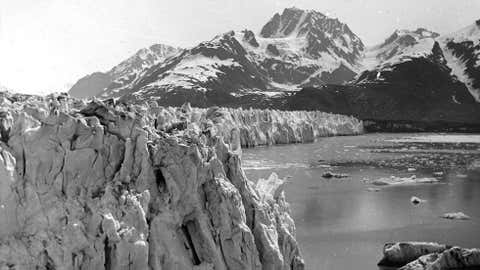

US
°C





The Supreme Court agreed to hear a case challenging the United States Fish and Wildlife Services protection of a rare frog.The dusky gopher frog is one of the most endangered species in the world.Edward Poitevent, the owner of the land, says the frog doesn't live on his property so it shouldn't be designated "critical habitat."Joseph Pechmann, a frog expert, says it's important to protect the land to ensure the survival of the species.
A legal dispute over private property rights and endangered species protection is headed for the U.S. Supreme Court, which has some environmentalists concerned.
"We are worried that the court will weaken the Endangered Species Act by adding restrictions to when theFish and Wildlife Service can designate unoccupied lands," Collette Adkins, an attorney for the Center for Biological Diversity, told weather.com in a phone interview.
The case is centered around a critically endangered amphibian known as the dusky gopher frog, which is considered to be one of the most endangered species in the world by the IUCN (International Union for the Conservation of Nature). The only known population currently resides in Mississippi but additional land in Louisiana was deemed critical habitat areas by the U.S. Fish and Wildlife Service.
The USFW this area is "essential to the frog’s future conservation," but Edward Poitevent, the owner of the disputed protected land argues that the property is unoccupied by the frogsand that the Endangered Species Act does not allow the government to declare his land critical habitat if the species doesn't live there. Poitevent took the federal agency to court and succeeded in getting a review by the high court.
()
"The dusky gopher frog cannot survive on our private property, and for that reason the property cannot legally be designated as critical habitat for the frog," Poitevent told weather.com in an email interview.
When the USFW first , the department was required by the Endangered Species Act to designate critical habitat for the frog. After a tip from Joseph Pechmann, a biology professor who previously taught at New Orleans University, the agency decided to declare Poitevent's land in St. Tammany Parrish, Louisiana to be critical habitat.
"The Fish and Wildlife Service submitted a draft critical habitat finding and one of my comments was that the critical habitat that was included in the draft was all in Mississippi and that the range of the species used to be from Southeastern Louisiana to Southwestern Alabama.” Pechmann told weather.com in a phone interview. “(It’s) important for the recovery of the frog that they be reestablished in a wider part of their geographic range,"
"Also, if all the populations are all together in one geographic area, there's a greater chance that some natural disaster or disease could wipe them all out and if they're spread over a larger geographic area then their long term persistence is more likely. So I recommended that they try and find some critical habitat in some of those other states. I was familiar with the habitat in Louisiana, and I used to do research on that property. So that's why the Fish and Wildlife Service went and took a look at it … One of the appeals of the Louisiana property is that there's a bunch of ponds that are located there and so you'd have what ecologists call a metapopulation, where you have several populations linked by dispersal, they're a lot more likely to persist over time than a single pond by itself," he added.
However, Poitevent,represented free of charge by Pacific Legal Foundation, contends that the critical habitat designation will in lost development and that the government went way too far.
Poitevent and his family own about 95 percent of the land subject to the habitat rule being challenged. Weyerhaeuser, a timber company, leases that land and additionally owns approximately 5 percent of the property.
"... How can our land be declared to be 'habitat' if the frog can't survive there?" Poitevent observed. "If you put a bunch of frogs there now, they'd just die ...There'd have to be changes made to it that will cost millions and millions of dollars that we can't afford to make as private property owners, and we certainly don’t want the U.S. taxpayers to shoulder the burden of the multi-million dollar costs of tearing up all of the trees on over 1,500 acres and burning the land every year. Simply put, this designation will not help the frog survive."
"I am very glad the Court granted review. Perhaps truth and justice will finally prevail," he added.
Environmentalists were discouraged by the Supreme Court's decision to consider the matter.
"The Supreme Court’s ruling is bad news for these endangered frogs," Cynthia Sarthou, executive director of the Gulf Restoration Network, . "This lawsuit attempts to gut essential habitat protections for the frog."
Adkins added that the unoccupied habitat provision in the Endangered Species Act is important because the threatened species needs protected areas in order to successfully recover.
"Why it's in the act is because habitat loss and destruction is the biggest threats to wildlife and we need to protect lands for restoration and reintroduction," she said.
Despite the ruling, Pechmann felt that there was hope that a settlement could be reached before the issue was decided by the Supreme Court in their next term.
"I hope a compromise can be reached between him and Fish and Wildlife Service," Pechmann said. "I find it very sad that a lot of effort and money is spent arguing about this when I think things could be worked out."












